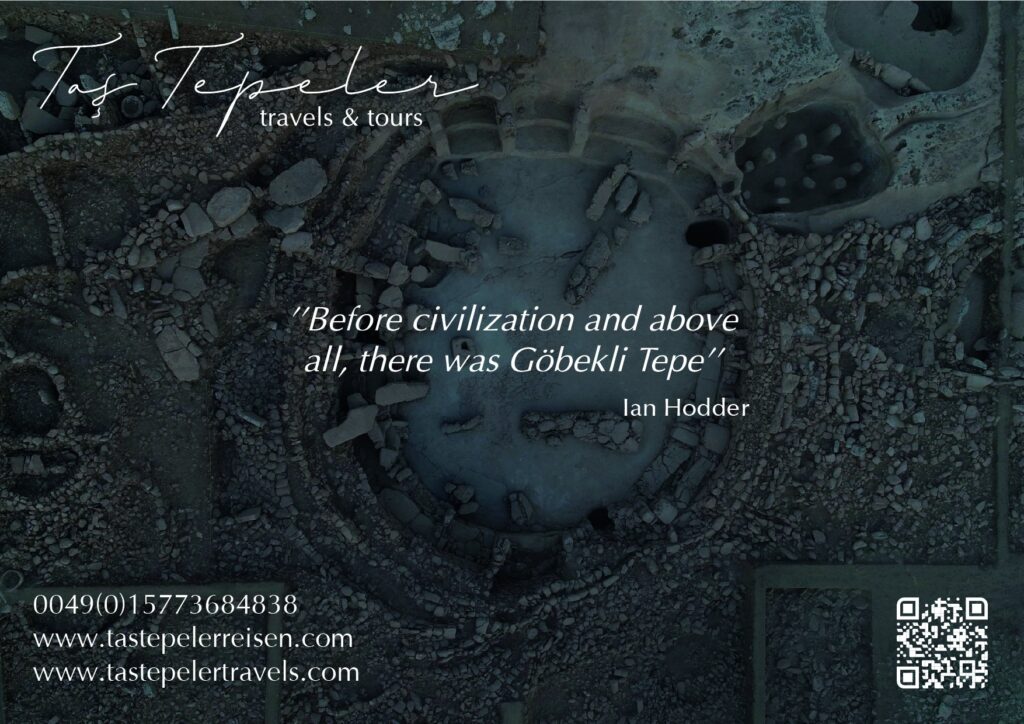The Stone Age Sanctuaries of Göbekli Tepe
About 15 kilometers north-east of the Turkish city of Şanlıurfa, on a mountain ridge that can be seen for miles around, lies the mound of Göbekli Tepe with its Stone Age Sanctuaries. Its enormous deposit layers, up to 15 meters high, have accumulated over several millennia on an area of about 9 hectares. Even today the place has lost nothing of its magical appeal. For example, a wishing tree, which stands on top of the ridge, is still sought by the inhabitants of the surrounding area. On this site, excavations done by the German Archaelogical Institute in cooperation with the museum of Şanlıurfa found an important piece of the puzzle represented by the early history of humanity, which contributes to a completely new understanding of the process of sedentism and the beginning of agriculture. Of course the hill, which is strewn with numberless stone implements, and with large-format, regular-shaped ashlars only revealed its secret as a result of the investigations, which have been carried on since 1995. Amazingly, no residential buildings have been discovered up to now. However, at least two phases of monumental religious architecture have been uncovered. Of these, the oldest layer, with its richly adorned monolithic pillars, is the most impressive. The buildings on this layer are circular, with a diameter of over 20 metres, and constructed from quarry stone. There are the enclosure A-D on the southern slope and enclosure E at the western plateau. Their age is impressive, having been dated to the 10th millennium BC, a time when men still lived as hunter-gatherers. This opened up a layer of the Stone Age, in which the so-called Neolithic Revolution took place. In superposition of layer III there is layer II, which has been dated to the 9th millennium BC. Now a certain reduction both in size of the structures and in numbers of the pillars can be observed. The uppermost layer I is represented by the surface debris including enormous deposits of Hangfußsedimente, accumulations of eroded sediments from layers II and III. There is no occupation from periods younger than the Pre-Pottery Neolithic at the site.



